Introduction
What Do Feral Cats Eat: Feral cats, also known as stray cats, are domestic cats that have reverted to a wild state. These cats are not socialized to humans and often live in colonies in urban, suburban, or rural areas. Feral cats are highly adaptable and can survive in a variety of environments, including forests, deserts, and even city streets. One of the key factors that contribute to their survival is their ability to find food.
Feral cats are opportunistic hunters and scavengers, which means they will eat whatever food is available to them. Their diet primarily consists of small mammals, birds, reptiles, and insects. They are skilled hunters and can catch prey such as mice, rats, squirrels, and rabbits. Feral cats are also known to eat birds and their eggs, as well as reptiles like lizards and snakes.
Feral cats will scavenge for food in garbage cat grass dumpsters, and other sources of human waste. They are known to eat leftover food, scraps, and even carrion. This scavenging behavior helps them survive in urban areas where there may be limited hunting opportunities.
They may suffer from malnutrition and starvation, especially in areas where resources are scarce. This is why many animal welfare organizations and individuals advocate for the practice of Trap-Neuter-Return (TNR) programs, which involve trapping feral cats, spaying or neutering them, and then returning them to their original location. These programs help control the feral cat population and ensure that the cats are healthy and well-fed.
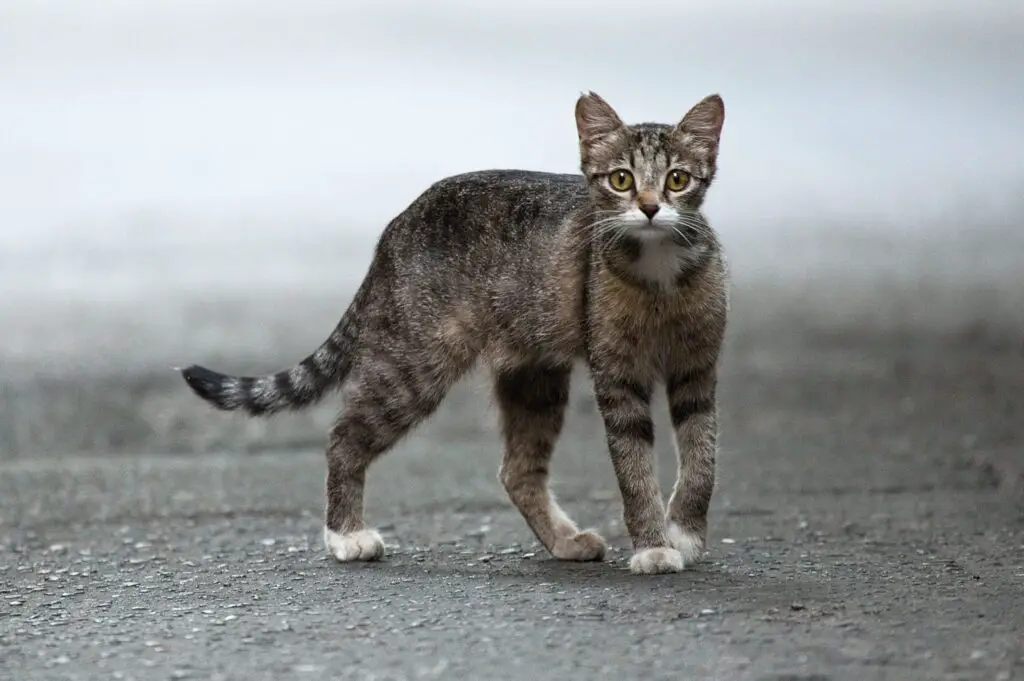
What can you feed feral cats?
Dos: What can you feed a feral cat?
- Tuna. It is one of the best food items to serve a stray cat.
- Chicken and beef. Another great option to feed cats is simply cooked (boneless) chicken.
- Plain rice or sweet potato. Plain rice and sweet potato are good fixes for a starving feral cat.
- Dog food.
- Most fruits and veggies.
Feral cats are domestic cats that have been abandoned or have strayed from their homes and are now living in the wild. These cats often rely on humans for food and shelter, and it is important to provide them with proper nutrition to ensure their health and well-being. However, feeding feral cats can be a bit challenging as they have different dietary needs compared to pet cats.
When it comes to feeding feral cats, it is important to provide them with a balanced diet that includes both wet and dry food. Wet food is beneficial as it provides hydration and helps prevent urinary tract issues, while dry food helps keep their teeth clean and healthy. A combination of both types of food to ensure they receive all the necessary nutrients.
To commercial cat food, feral cats can also be fed with homemade meals. These meals can include cooked chicken, turkey, or fish, as well as vegetables like carrots or peas. However, it is important to avoid feeding them raw meat or bones, as these can pose a choking hazard or lead to bacterial infections.
Another important aspect of feeding feral cats is providing them with fresh water. Water is essential for their overall health and helps prevent dehydration. To place water bowls in multiple locations to ensure easy access for the cats.
Feeding feral cats should be done on a regular schedule to establish a routine. This helps the cats feel more secure and allows them to rely on a consistent source of food. It is also important to monitor their food intake and adjust the portions accordingly to maintain a healthy weight.
Is it safe to feed a feral cat?
The feeding of stray cats poses risks not just from cats but also from other local wildlife species such as raccoons, skunks, foxes and opossums that may be drawn to these feeding stations. Luring these animals into human areas, even unintentionally, poses the same risks to people, pets and property.
Feeding a feral cat can be a controversial topic, with opinions varying widely on whether it is safe or not. Feral cats are domestic cats that have either been abandoned or have strayed from their homes and have reverted to a wild state. They are often wary of humans and may not be accustomed to being fed by them. However, providing food for feral cats can have both positive and negative consequences.
On one hand, feeding feral cats can help ensure their survival and well-being. Feral cats face numerous challenges in the wild, including finding enough food to eat. By providing regular meals, individuals can help prevent starvation and malnutrition in these cats. Feeding feral cats can also help control their population by preventing them from reproducing at a rapid rate. This can be particularly important in areas where feral cat populations are out of control and causing harm to local ecosystems.
On the other hand, feeding feral cats can have negative consequences. Some argue that feeding feral cats can lead to dependency, making it harder for them to survive on their own. They may become reliant on humans for food and lose their natural hunting instincts. Feeding feral cats can also attract other wildlife, such as rats or raccoons, which can create additional problems. Additionally, feeding feral cats without proper care and attention can lead to the spread of diseases, such as rabies or feline leukemia.
It is important to approach feeding feral cats with caution and responsibility. If you choose to feed feral cats, it is recommended to do so in a controlled and consistent manner. This can help prevent dependency and reduce the risk of attracting unwanted wildlife. It is also important to provide proper veterinary care, such as vaccinations and spaying/neutering, to prevent the spread of diseases and control the feral cat population. Ultimately, the safety of feeding feral cats depends on the specific circumstances and the actions taken by individuals.
Do feral cats eat everything?
Cats are carnivorous creatures that regularly hunt for their food. Rodents, birds, fish, and even insects make up a typical cat’s diet in the wild. Feral cats can also subsist on garbage, unattended pet food, and even roadkill.
Feral cats are domestic cats that have been abandoned or have strayed from their homes and have reverted to a wild state. These cats are known for their ability to survive in various environments, including urban, suburban, and rural areas. One common question that arises when discussing feral cats is whether they eat everything they come across.
Feral cats are opportunistic hunters and scavengers, which means they will eat a wide variety of food sources. Their diet primarily consists of small mammals, birds, reptiles, and insects. They are skilled hunters and have adapted to their environment, allowing them to catch prey efficiently. Feral cats are also known to scavenge for food in garbage cans, dumpsters, and other human waste areas.
They have specific dietary needs and preferences, and their food choices are influenced by factors such as availability and accessibility. For example, if there is an abundance of small mammals in their environment, they may primarily rely on hunting for their food. On the other hand, if food sources are scarce, they may resort to scavenging or even eating plant matter.
Additionally, feral cats are known to be highly adaptable and can adjust their diet based on the resources available to them. This adaptability is one of the reasons why feral cats have been able to survive and thrive in various environments. They are capable of adjusting their hunting and feeding behaviors to ensure their survival.
What is a cats Favourite food?
“Cats are meat eaters, plain and simple. They have to have protein from meat for a strong heart, good vision, and a healthy reproductive system. Cooked beef, chicken, turkey, and small amounts of lean deli meats are a great way to give them that. Raw or spoiled meat could make your cat sick.
Cats are known for being picky eaters, but they do have their favorite foods. While every cat is different and may have their own preferences, there are some common foods that many cats seem to enjoy. Understanding a cat’s favorite food can help ensure they are getting the nutrition they need and can also be a way to bond with your feline friend.
One of the most popular cat foods is fish. Many cats are attracted to the smell and taste of fish, and it is often a favorite among feline companions. Whether it’s canned tuna, salmon, or even sardines, fish can be a great source of protein and omega-3 fatty acids for cats. Fish should be given in moderation as a treat, as too much can lead to thiamine deficiency.
Another favorite food for cats is chicken. Chicken is a lean source of protein and is often found in many commercial cat foods. It can be cooked and shredded for a homemade meal or given as a treat. Some cats may prefer dark meat over white meat, so it’s worth experimenting to see what your cat enjoys.
Dairy products are also a favorite among many cats. While cats are lactose intolerant and cannot digest milk, they can often tolerate small amounts of dairy products such as cheese or yogurt. These can be given as an occasional treat, but it’s important to monitor your cat for any signs of digestive upset.
Finally, many cats enjoy catnip. Catnip is a herb that is part of the mint family and has a strong scent that many cats find irresistible. It can be given as a treat or sprinkled on toys to provide enrichment and entertainment for your cat.
Can I give biscuits to a stray cat?
Please do not feed biscuits to cats as it spikes their insulin and make them fat instead feed them with the food made for them or else you could offer them chicken or fish too. Definitely no. Vets advise that sugar and chocolate are poisons for cats.
Yes, you can give biscuits to a stray cat. Stray cats often struggle to find enough food to eat, so providing them with biscuits can be a kind and helpful gesture. However, there are a few things to consider before offering biscuits to a stray cat.
Firstly, it’s important to ensure that the biscuits you are giving are safe for cats to consume. Some human biscuits may contain ingredients that are harmful to cats, such as chocolate or raisins. It’s best to choose cat-specific biscuits or treats that are specifically formulated for their dietary needs. These can be found at pet stores or online.
Secondly, it’s important to approach a stray cat cautiously and respectfully. Stray cats are often wary of humans and may be skittish or fearful. It’s best to let the cat come to you rather than forcing interaction. If the cat seems receptive to your presence, you can slowly offer a biscuit by placing it on the ground near you. This allows the cat to approach and eat the biscuit at its own pace.
Thirdly, it’s important to remember that biscuits should not be the sole source of nutrition for a stray cat. While biscuits can provide a temporary solution to hunger, cats require a balanced diet that includes protein, fats, and other essential nutrients. If you regularly encounter a stray cat and wish to help, consider providing a more complete and nutritious meal, such as wet cat food or a mixture of dry food and wet food.
If you notice any signs of illness or injury, it may be best to contact a local animal welfare organization or veterinarian for assistance. They can provide guidance on how to best help the stray cat and ensure its health and safety.
Feral cats have a diet that is primarily composed of meat. They are obligate carnivores, which means that they require a diet that consists mainly of animal tissue to meet their nutritional needs. Their natural prey includes small mammals, birds, reptiles, and insects. Feral cats are skilled hunters and have adapted to survive in various environments by preying on a wide range of animals.
To hunting, feral cats may also scavenge for food. They are opportunistic feeders and will consume carrion or food scraps if they are available. However, their main source of nutrition comes from capturing and consuming live prey. This hunting behavior is essential for their survival as it provides them with the necessary nutrients, such as protein and taurine, that are crucial for their overall health.
Their bodies are not designed to digest plant-based foods efficiently, and they require certain nutrients, such as taurine, that are only found in animal tissues. Feeding them a diet that lacks these essential nutrients can lead to severe health problems, including nutritional deficiencies and organ failure. Therefore, it is crucial to provide feral cats with a diet that mimics their natural prey and meets their specific dietary requirements.
What are the typical food sources for feral cats?
Feral cats primarily rely on hunting for their food, as they are natural predators. Their diet consists mainly of small mammals such as mice, rats, and rabbits. They are also known to eat birds, reptiles, amphibians, and insects. Feral cats are opportunistic feeders and will consume whatever prey is available in their environment.
In addition to hunting, feral cats may scavenge for food from garbage cans, dumpsters, or other human food sources. They are known to be skilled at finding and catching prey, using their keen senses and agility to their advantage.
Feral cats may not always have access to a consistent food source, especially in urban areas where hunting opportunities may be limited. In such cases, they may rely more heavily on scavenging or seeking out human-provided food, which can lead to conflicts with humans and other animals.
Are feral cats primarily carnivorous or omnivorous?
Feral cats are primarily carnivorous, meaning their diet consists mainly of meat. As descendants of domestic cats, feral cats have retained their carnivorous nature and rely on animal protein for their nutritional needs. Their digestive systems are adapted to process and derive nutrients from animal tissues, such as muscle, organs, and bones.
While feral cats are primarily carnivorous, they can also exhibit some omnivorous behavior. This means that they may occasionally consume small amounts of plant matter, such as grass or vegetation. However, these plant-based foods are not a significant part of their diet and are usually ingested incidentally or for medicinal purposes, such as aiding digestion or eliminating hairballs.
Feral cats have evolved as skilled hunters, and their natural instinct is to hunt for their food. They are highly efficient predators and have the ability to catch and consume a wide variety of prey, including small mammals, birds, reptiles, and insects. Hunting provides feral cats with the necessary nutrients and energy they need to survive in their outdoor environment.
Do feral cats rely on hunting for their food?
Yes, feral cats do rely on hunting for their food. As descendants of domestic cats that have returned to a wild state, feral cats have retained their natural instincts for hunting and survival. Hunting is an essential part of their daily routine and is necessary for their survival in the wild.
Feral cats are skilled hunters and have adapted to their environment by preying on small animals such as rodents, birds, reptiles, and insects. They use their keen senses, agility, and stealth to stalk and capture their prey. Hunting provides feral cats with the necessary nutrients, including protein and fat, that they need to maintain their health and energy levels.
Feral cats rely on hunting for their food, they may also scavenge for food from other sources such as garbage bins or human settlements. However, hunting remains their primary means of obtaining sustenance in their natural habitat.
Are there any specific dietary requirements for feral cats?
Feral cats, like their domestic counterparts, have specific dietary requirements that need to be met in order for them to maintain optimal health. While they are primarily carnivorous, meaning they rely on a diet that consists mainly of meat, there are a few other important factors to consider when it comes to their nutritional needs.
Protein is a crucial component of a feral cat’s diet. It is essential for their overall growth, development, and maintenance of lean muscle mass. Feral cats require a higher protein intake compared to domestic cats, as they are more active and have to rely on hunting for their food. A diet rich in high-quality animal-based proteins, such as chicken or fish, is ideal for feral cats.
Fat is another important nutrient for feral cats. It provides them with a concentrated source of energy and helps support their skin and coat health. Feral cats need a diet that contains moderate levels of fat, as excessive amounts can lead to obesity and other health issues. Including fatty acids, such as omega-3 and omega-6, in their diet can also help promote a healthy coat and reduce inflammation.
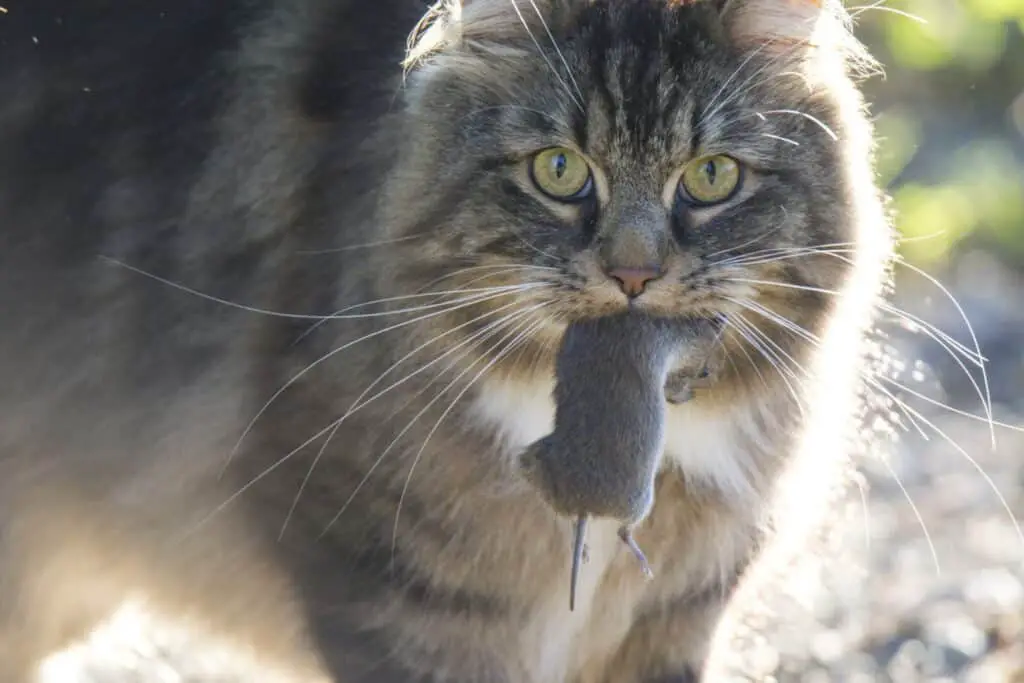
Conclusion
Feral cats have a varied diet that consists of both natural prey and human-provided food. They are skilled hunters and will catch small mammals, birds, reptiles, and insects to satisfy their hunger. However, they are also opportunistic scavengers and will consume garbage, leftovers, and even pet food left outside. This adaptability allows them to survive in a wide range of environments, from urban areas to rural landscapes.
Feral cats are capable of hunting and finding their own food, they can also become reliant on human-provided food sources. This can lead to negative consequences for both the cats and the ecosystem. When feral cats rely heavily on human-provided food, they may become less effective hunters, which can disrupt the natural balance of prey populations. Additionally, the presence of feral cats can have detrimental effects on native wildlife, especially in areas where they are not native.
Efforts to manage feral cat populations and their diet have been implemented in various ways. One approach is through trap-neuter-return (TNR) programs, where feral cats are trapped, sterilized, and then returned to their original location. This helps to control the population and prevent further breeding. Additionally, some organizations and individuals provide managed feeding stations for feral cats, where they can access a consistent source of food without relying solely on hunting.
Feral cats eat is crucial for managing their populations and minimizing their impact on the environment. By promoting responsible feeding practices and implementing TNR programs, we can help ensure the well-being of feral cats while also protecting native wildlife and maintaining a healthy ecosystem.

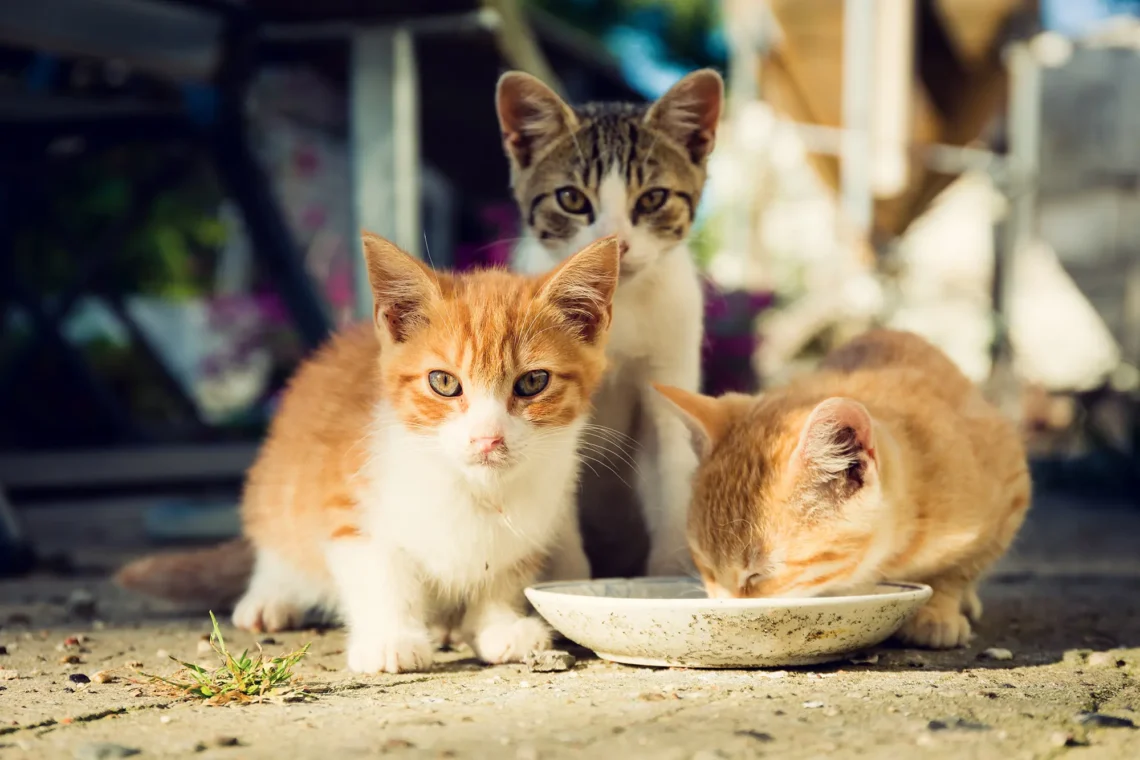
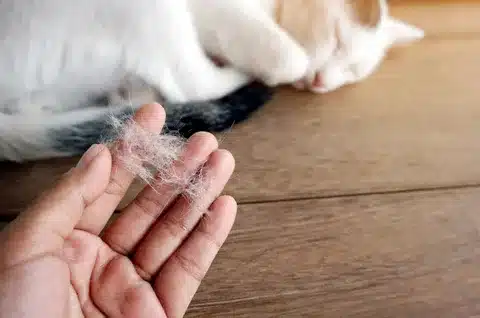

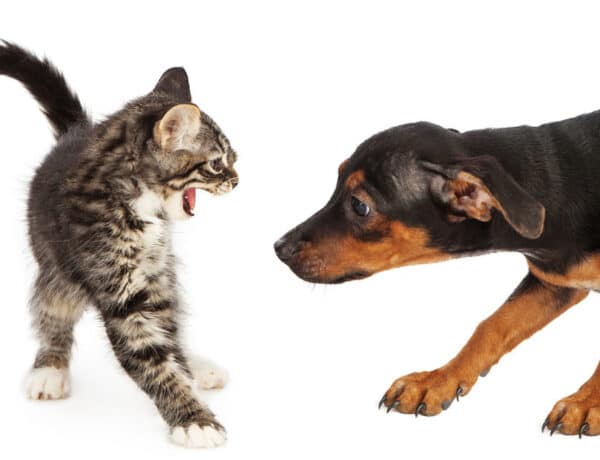
No Comments